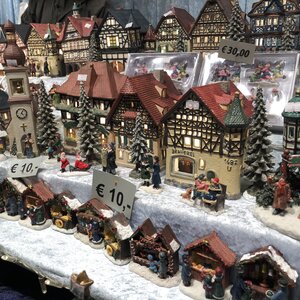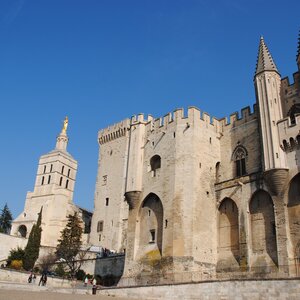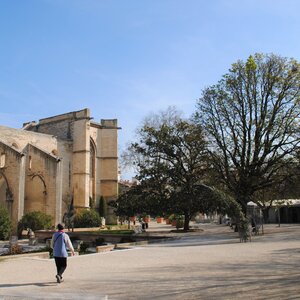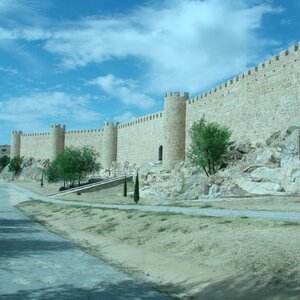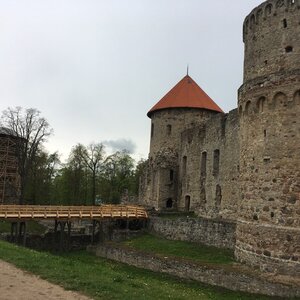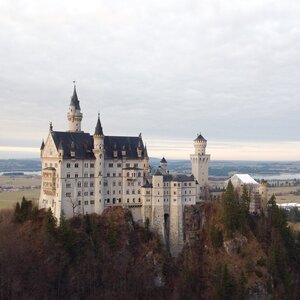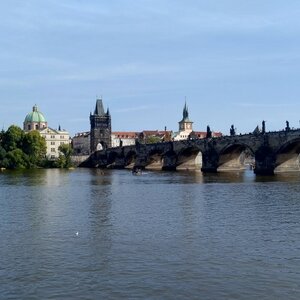The city of Versailles was founded in the XI century. Now it has about 90 thousand inhabitants. But first of all, tourists are attracted to the city by the palace and park complex Versailles, which can be explored all day long.
The whole complex is divided into several zones: the Palace, the Grand and Petit Trianons, Marie Antoinette’s village and the gardens of Versailles. I will tell you what to see in the palace-symbol of an entire era of royal France and how to get there from Paris.

Palace of Versailles (Le Château de Versailles)
The luxurious palace — Chateau — in the style of classicism was supposed to become a symbol of the absolute monarchy with its unlimited spending, to demonstrate to the world the power of France and its status as the cultural capital of the Old World. And so far, no governmental residence has surpassed Versailles: the palace and park complex is considered the largest in Europe, it occupies an area of 6 hectares, it has 2300 rooms and halls.
In 1789, during the French Revolution, the palace ceased to be the residence of the kings, some of the art objects were taken to museums in Paris, and the furniture was sold at auctions. Different museums changed in the palace, and in 1837 Versailles became the Museum of French History. In 1919, a peace treaty was signed at the palace, ending World War I.

La galerie des Glaces.
The Mirror Gallery is the main hall of Versailles, its main attraction. This 73-meter-long hall connected the north and south wings — the king’s and queen’s quarters. The hall was used for balls and receptions.
Gilded décor, crystal chandeliers and 30 plots on the ceiling with the history of Louis XIV’s reign. All this is reflected in the 357 mirrors of the gallery. The hall was decorated so expensively that some of the décor was sold a few years after the construction was completed.
Every Saturday, from June 13 to September 19, 2020, the Mirror Gallery will host a 45-minute performance in which dancers in 17th century costumes will show how a palace ball was held. The cost to attend the performance is from 23 €, more information on the website.

La Chapelle royale.
The chapel was consecrated in honor of St. Louis, the patron saint of the king. From 1710 to 1789, French princes and princesses were baptized and married in the chapel. Nowadays, concerts are held here, the schedule of which can be found on the website.

La galerie des Batailles (The Gallery of Battles)
The palace’s largest room is 120 meters long and occupies almost the entire first floor of the south wing. The gallery was opened in 1837, with more than 30 huge paintings telling the story of 15 centuries of French military success.

Coronation Hall (Salle du Sacre)
No one has ever been crowned in the hall itself. Due to the size of the room, it was able to accommodate three large canvases, including a copy of a painting depicting the coronation of Empress Josephine, the wife of Napoleon I. Josephine herself never had the chance to live in Versailles, and before the Revolution she was not allowed to visit the court of which she had dreamed — and it was only in Jacques Louis David’s painting that she took her revenge.
Unusually, the artist painted two canvases — one commissioned by Napoleon, the other a complete copy, commissioned by an American businessman. The original was originally exhibited in this very room before moving to the Louvre. The replica only took this place in the mid-twentieth century.

La chambre de la Reine.
This room was once occupied by three queens: Maria Theresa, Maria Leszczynska and Marie Antoinette. The queens spent most of their time in the bedroom, gave birth to their children and died. Between 1682 and 1786, 19 princes and princesses were born here.

La chambre du Roi.
A 90 square meter room where Louis XIV lived and died in 1715. The bedroom is decorated with gold, silver and crimson brocade, paintings by famous artists who were personally selected by Louis XIV. In the bedroom were held public ceremonies of waking the king and his going to bed, when the «sun king» was accompanied by his courtiers at every step.

How to get to the palace
- Working hours of the palace: from 9:00 to 17:30, in summer from 9:00 to 18:30, Monday — closed. The last visitor is allowed in half an hour before closing time.
- Entrance (Palace ticket): adults 18 €, under 18 years old free of charge. Entrance ticket includes: audio guide, entrance to the palace, carriage museum, entrance to the park and gardens on days when there are no fountain shows.
- Admission (Passport ticket): adults from 20 € to 27 € (depending on the season), from 6 to 18 years old — 10 €, children under 5 years old — free of charge. This ticket includes: a visit to the palace with an audio guide, both Trianons, the carriage museum, the gardens and the park with a musical fountain show.
- Admission (2-day Passport ticket): adults from 25 € to 30 € (depending on the season). The whole complex can be visited within two days.
Le Grand Trianon (Le Grand Trianon) and Le Petit Trianon (Le Petit Trianon)
The Grand Trianon is a one-story but not insignificant pink marble palace surrounded by gardens. Here Louis XIV could freely socialize with his entourage and hold dinners for the chosen few. Peter the Great stayed here during his visit to Versailles. The palace later became one of Napoleon’s residences.
The Petit Trianon is a small palace built by Louis XV for the Marquise de Pompadour. Marie Antoinette later turned it into her residence. Next to the Petit Trianon, the «Royal Village» was built for Marie Antoinette’s leisure, with a pond, a mill, a farm and village houses — just as the queen envisioned a pastoral French village.
Both palaces are located at the back of Versailles Park in the former village of Trianon, hence the name of the palaces.
- Mode of operation: from 12:00 to 17:30, in summer from 12:00 to 18:30, Monday — closed.
- Admission: adult — 12 €, children under 18 free of charge.
- Grand Trianon and Little Trianon websites.
Gardens of Versailles (Les Jardins)
The construction of the gardens began in 1661, for this purpose the marshes were drained and the meadows were leveled. The gardens now cover an area of more than 900 hectares, and in Louis XIV’s time they covered more than 8000 hectares. To preserve the design of the park, the trees are replanted every 100 years — the last time it was done in 1999, after a big hurricane.
Versailles parkland contains 1,400 large and small fountains, more than 400 sculptures, about 350,000 trees, two mirror pools and a large canal.
- Working hours: daily, from 8:00 to 18:00, in summer from 7:00 to 20:30. In bad weather (heavy rain or snow) the gardens are closed.
- Admission: free, except on fountain music show days (usually weekends).


Due to poor water supply, the fountains were only turned on during the king’s walks in the 17th and 18th centuries. Nowadays, they operate according to a specific schedule and you can watch the fountains running with music for a fee.
Musical Fountain Show (Les Grandes Eaux Musicales)
The operation of the large fountains in a musical setting in 2020 can be seen from April 4 through November 1, on weekends and some weekdays.
- Admission: adults — 11 € (at the box office) and 9,5 € (when buying online), children from 6 to 17 years old and students — 9,5 € (at the box office) and 8 € (when buying online), children under 5 years old — free of charge.
Les Jardins Musicaux (The Gardens of Music)
Stroll through the French garden to the sounds of baroque music, see the mirror pool water show and Neptune’s fountain from April 3 through October 30, 2020 on Fridays and some Tuesdays, 10:00 am to 7:00 pm.
- Admission: adults — 10 € (at the box office) and 8,5 € (if purchased online), children from 6 to 17 years old and students — 9 € (at the box office) and 7,5 € (if purchased online), children under 5 years old — free of charge.
Night Fountain Show (Les Grandes Eaux Nocturnes)
The fountain show, culminating with fireworks, will be held in 2020 from June 13 through September 19 every Saturday from 8:30 to 23:05. The final fireworks show is from 22:50 to 23:05.
- Admission: adults 30 € (at the box office) and 28 € (if purchased online), children from 6 to 17 years old and students 26 € (at the box office) and 24 € (if purchased online), children under 5 years old are free.


Carriage Museum (La galerie des Carrosses)
The carriage museum is located on the first floor of the former large stables. There are about 40 ceremonial carriages, decorated with gold and carvings, which traveled at a speed of no more than 3 km/h. In the museum you can see the wedding carriage of Napoleon I and the carriage in which Charles X went to his coronation.
- Mode of operation: from 12:30 to 17:30, in summer until 18:30, closed on Monday.
- Admission: free.
How to get to Versailles from Paris
There are several ways to travel the 18km journey from the French capital to Versailles:
- RER city train, line C to Versailles Château — Rive Gauche station. Travel time is 40—50 minutes, fare is 3,5 €. It takes 10 minutes to walk from the station to the Palace of Versailles.
- SNCF train, branch L from Paris Montparnasse station to Versailles Chantiers or from Saint Lazare station to Versailles Rive Droite. The fare is 4.5 €. It takes 18 minutes to walk from the stations to the palace.
- Bus, route #171 from Pont de Sevres metro station (line 9) to the final stop — Chateau de Versailles. Travel time: 30 minutes depending on traffic, one-way fare 3 €.
- Buses — express from Port de la Bourdonnais (Eiffel Tower). Three times a day, except Monday. The fare is 24 €.
Useful information:
- You can visit the entire palace and park complex for free on the first Sunday of the month from November through March.
- Another way to get into Versailles for free is to buy a paris museum pass. But the card, which entitles you to visit more than 50 museums in Paris and the suburbs, is not valid on days when Versailles hosts musical fountain shows.
- At the entrance to the complex there are two queues: one for the ticket office and one for the entrance, for those who bought tickets online on the website. When purchasing tickets, it is necessary to select the date of the visit and visit the complex on the selected day.


